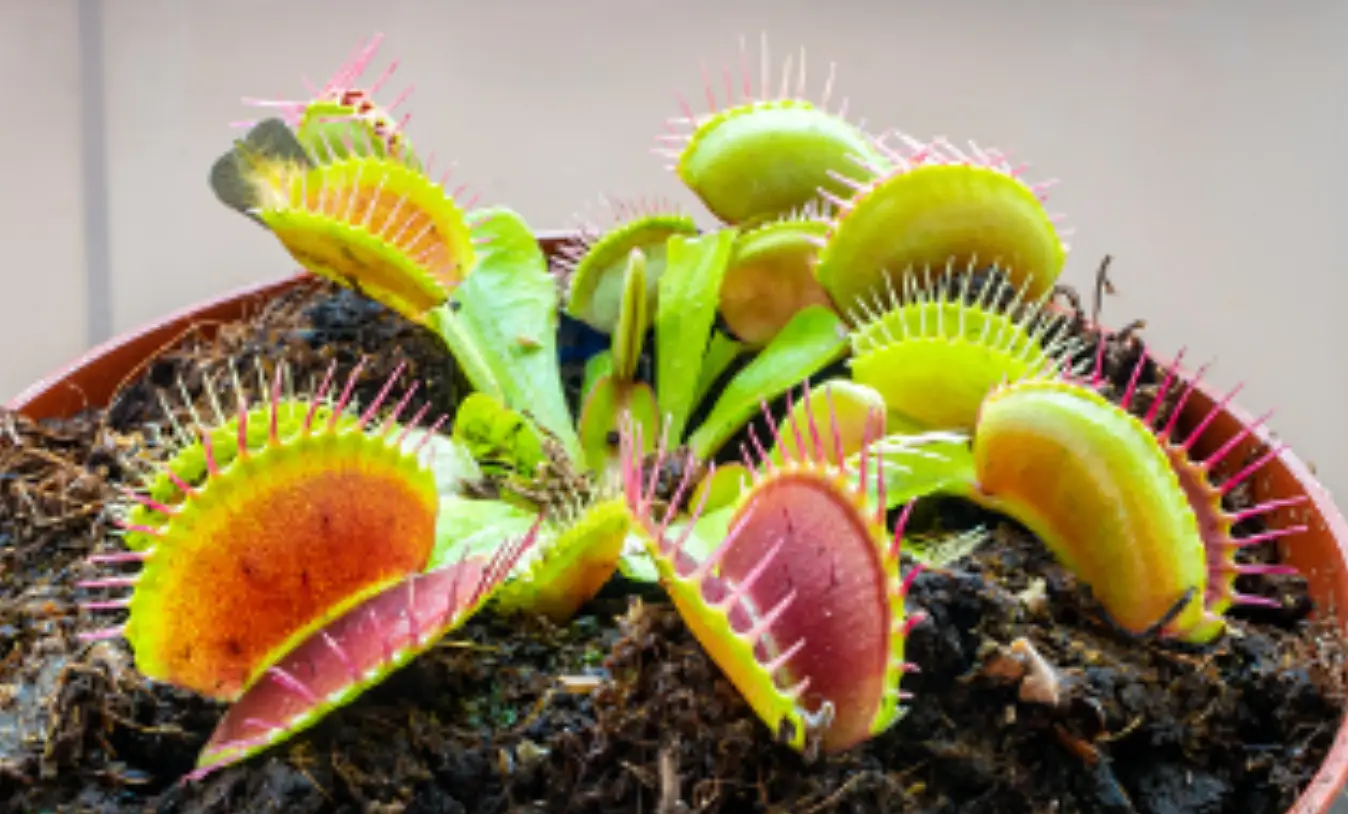Contents
Insectivorous Plants in America : A Fascinating World of Carnivorous Flora
Insectivorous plants, also known as carnivorous plants, are a group of fascinating flora that have developed unique strategies for supplementing their nutrient-deficient soils by capturing and digesting insects. While the Americas are home to several species of insectivorous plants, they are relatively less studied than their counterparts in other regions. In this article, we will explore some of the most common insectivorous plants found in the Americas and discuss their habitats, characteristics, and hunting mechanisms.
The Pitcher Plant Family
One of the most well-known groups of insectivorous plants in America is the pitcher plant family, also known as Sarraceniaceae. This family consists of three genera, namely Sarracenia, Darlingtonia, and Heliamphora, which are all native to the Americas. These plants are commonly found in boggy areas and wetlands, where they have adapted to low-nutrient soils by developing specialized leaves that form a pitcher-shaped structure.
The leaves of pitcher plants are modified to form a tube-shaped structure with a hood or lid on top, which serves to prevent rainwater from diluting the digestive fluids inside the pitcher. The inside of the pitcher is lined with downward-pointing hairs or a slippery surface, which makes it difficult for insects to escape once they enter. The insects that are trapped inside are then digested by enzymes secreted by the plant, which breaks down the prey into nutrients that can be absorbed by the plant.
Sarracenia
The Sarracenia genus is the most widespread and diverse of the three genera in the pitcher plant family. These plants are found in the eastern half of North America, from the Canadian provinces of Ontario and Quebec south to Florida and west to Texas. The most well-known species of Sarracenia is the trumpet pitcher plant (Sarracenia alata), which has a distinctive yellow-green color and a flared trumpet-shaped opening to its pitcher.
Another interesting species of Sarracenia is the purple pitcher plant (Sarracenia purpurea), which is found in boggy areas in eastern North America. This plant has a striking appearance with a reddish-purple coloration and a unique pattern of veins on its pitcher. The purple pitcher plant has a mutualistic relationship with a species of ant (Formica exsectoides), which lives inside the pitcher and feeds on the captured insects. In return, the ants protect the plant from herbivores and other predators.
Darlingtonia
The genus Darlingtonia is monotypic, meaning it only consists of one species, Darlingtonia californica, which is commonly known as the California pitcher plant or cobra lily. This plant is found in the wetlands of northern California and Oregon and is known for its distinctive and unique appearance. The pitcher of the cobra lily is shaped like a snake with a forked tongue, hence its name. The plant is also characterized by a translucent hood that allows light to enter the pitcher, making it easier for insects to see and enter.
Heliamphora
The Heliamphora genus is found exclusively in the highlands of South America, in regions such as Venezuela, Guyana, and Brazil. These plants are known for their small, compact pitchers and are often found growing in rocky or gravelly soils. Unlike the other two genera in the pitcher plant family, Heliamphora pitchers are not as deep, and their opening is often obscured by a dense mat of hair. This adaptation serves to protect the plant from high-altitude winds and cold temperatures.
Venus Flytrap (Dionaea muscipula)

Perhaps the most well-known insectivorous plant, the Venus flytrap is native to the wetlands of North and South Carolina. The plant’s modified leaves, called traps, have tiny hairs that, when triggered, cause the trap to close quickly, trapping the prey inside. The Venus flytrap then secretes digestive enzymes that break down the insect, allowing the plant to absorb the nutrients. Unfortunately, habitat loss and poaching have threatened this plant, and it is illegal to harvest or remove Venus flytraps from the wild in North Carolina.
Sundew (Drosera spp.)
Sundews are a diverse group of insectivorous plants found throughout the Americas, with several species native to North America. Sundews have tentacle-like leaves that secrete a mucilaginous liquid, which traps insects when they land on the leaf. The plant’s leaves then wrap around the prey, releasing digestive enzymes to break down the insect. One species of sundew found in North America is the round-leaved sundew (Drosera rotundifolia), which is found in bogs and wetlands in the northern states. Another species, the spoon-leaved sundew (Drosera intermedia), is found in the southeastern states.
Butterwort (Pinguicula spp.)
Butterworts are a group of insectivorous plants found throughout the Americas, with several species native to North America. Butterworts have broad, flat leaves covered in tiny, glandular hairs that secrete a sticky, mucilaginous liquid that traps insects. Once trapped, digestive enzymes break down the insect for the plant to absorb. One species of butterwort found in North America is the eastern butterwort (Pinguicula vulgaris), which is found in wetlands in the northeastern states.
In South America, the most well-known insectivorous plant is the bromeliad (Bromeliaceae family). Bromeliads are a type of epiphyte, meaning they grow on trees rather than in soil. Many species of bromeliads have evolved to capture insects in their leaf rosettes, where they are then digested.
In conclusion, Insectivorous plants play an important role in their ecosystems, particularly in nutrient-poor environments where they supplement their nutrient intake by feeding on insects. They also provide a food source for some animals, such as frogs and birds, that are able to extract insects from the plants without being trapped themselves. Insectivorous plants are a fascinating and unique group of plants found in the Americas. Their specialized adaptations for capturing and digesting insects have enabled them to thrive in nutrient-poor environments and play an important role in their ecosystems.


Leave a Reply